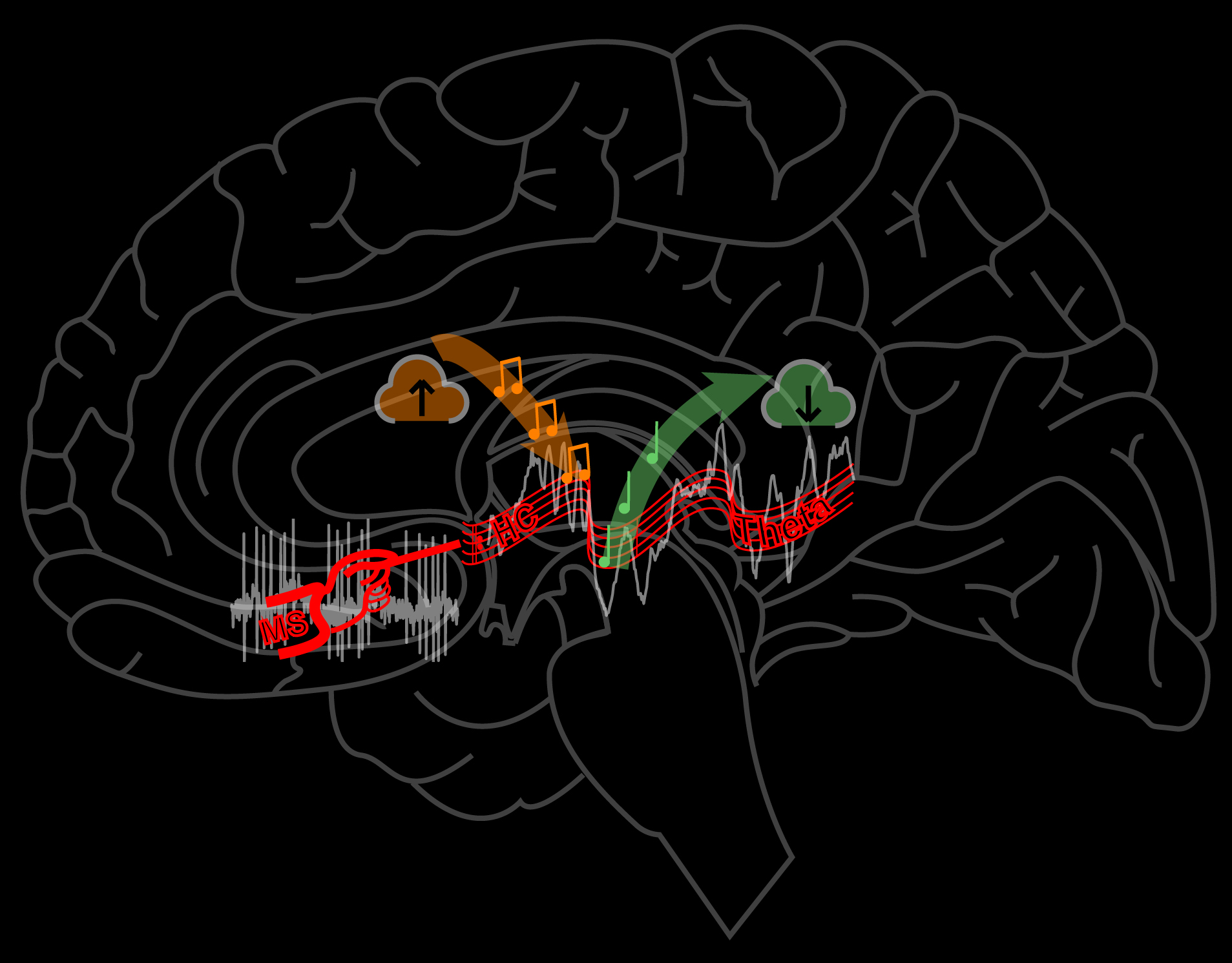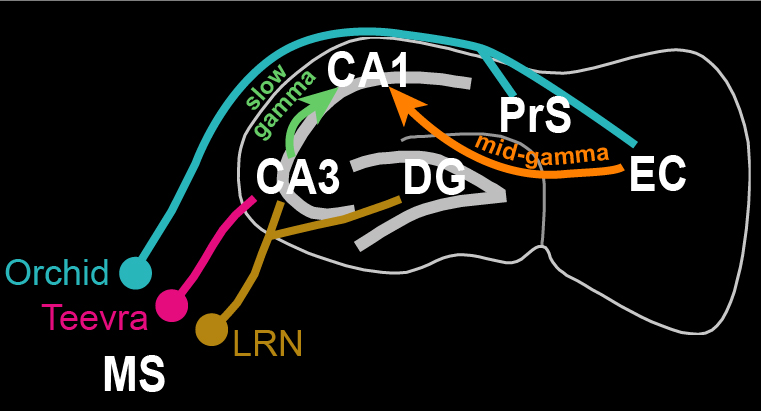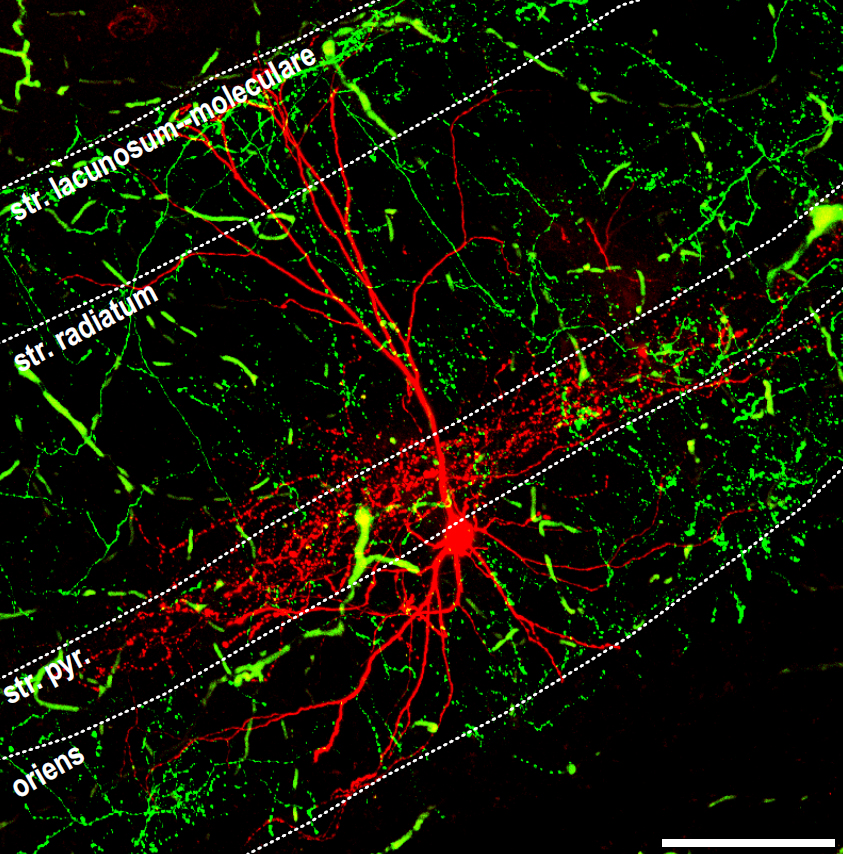The new discovery by HUN-REN IEM researchers reveals the coordinating processes of memory multiplexing considered one of the brain’s peak performances
A new discovery by a team led by Dr. Balázs Hangya of the HUN-REN Institute of Experimental Medicine (HUN-REN IEM) suggests that a small brain area in the deep forebrain, the medial septum, plays a key role in the coordination of memory storage and retrieval. The paper presenting the research findings has just been published today in Nature Communications. Through better understanding how memory works, the discovery may open up new possibilities in the treatment of dementia and other memory related disorders.

The medial septum is far more than a mere metronome responsible for setting the pace of the hippocampal theta rhythm. It resembles more of a maestro, conducting a symphony of oscillations spanning a broad frequency band, brought to life by the hippocampal orchestra. In doing so, it ensures precise timing for the unconsciously multiplexed memory encoding and retrieval through the hippocampal structures. (This illustration was created by Balint Kiraly using the open access science art of Stoyo Karamihalev (https://scidraw.io/drawing/395).)
It is difficult to find the right words to describe the performance of our brain. Think of something as common as talking to someone while driving. We pay attention to the road, note changes we need to remember later, and recall past events. Our brain does this without conscious effort. This cannot be explained simply by the fact that parallel processing of information is fundamental to the brain's functioning, that's what millions of pathways, loops and circuits are for. Memory storage and retrieval requires overlapping brain structures, and the brain uses a very efficient process: it switches between encoding and retrieving memory rapidly, about 8-10 times per second.
This rapid shift is most characteristic of an area of the hippocampus called CA1 and manifests itself as an 8-10 Hertz brainwave called a theta oscillation. The prevailing theory is that memory storage occurs predominantly around theta peaks, while recall is associated with theta valleys. During these different phases of each theta cycle, the CA1 area must communicate with different brain areas. Around the theta peaks, it receives sensory information from the entorhinal cortex, while around the theta valleys, it processes information transmitted via another hippocampal area, CA3. This was already known, but it is not yet fully understood how CA1 always knows which area to coordinate with so that storage and recall do not interfere with each other.

Schematic of the distinct indirect septo-hippocampal pathways orchestrating theta-coupled gamma oscillations, connecting the medial septum with the CA1 through the entorhinal cortex (memory encoding) and the CA3 (memory retrieval). (Image credit: Bálint Király)
In a new study with first authorship of Bálint Király, HUN-REN IEM researchers led by Dr Balázs Hangya have discovered that a small brain area in the deep forebrain, the medial septum, plays a key role in this process. Hangya's group, in collaboration with Viktor Varga, also at the institute, recorded the activity of neurons in the medial septum of freely moving mice. Memory storage and recall are accompanied by fast brain waves embedded in a continuous theta rhythm, known as "gamma" waves, which have different frequencies: faster waves occur during storage, and slower waves during recall. The researchers found that neurons in the medial septum are able to adapt their activity to the fast and slow gamma rhythms, suggesting that they are involved in generating these waves. By observing small changes in medial septal activity, the researchers found that they were followed by corresponding changes in CA1 gamma rhythm within a few milliseconds, demonstrating the leading role of the medial septum in controlling gamma waves.
Another question was also raised during the research. Through what pathways might the medial septum influence information processing in CA1? Although there is a direct link between the two areas, given the complexity of memory processes, it is very likely that other areas are involved. To answer this question, Hangya’s team worked with Tim Viney and David Dupret's laboratory (University of Oxford). Using recordings from neurons in the medial septum, they identified two main pathways through which the medial septum influences CA1 gamma waves. Faster gamma waves, important in memory storage, are routed by the medial septum through the entorhinal cortex, while slower gamma waves, important in memory recall, are routed through the CA3 area. However, in addition to the two confirmed pathways, it is very likely that other direct and indirect pathways, not yet identified, play an important role. Much of what we know about the brain comes from observing its complex activity, but optogenetics also allows us to observe how the brain responds to direct manipulation by activating or silencing specific groups of neurons by shining light on them.

Microscopy image of a hippocampal interneuron (red) recorded in the CA1 region, receiving inhibitory inputs from the medial septum (green). Scale bar, 100 µm. (Image credit: Dániel Schlingloff)
Hangya’s and Varga's groups also investigated whether optogenetic activation of certain medial septal neurons in a pattern that mimics natural activities can induce the expected gamma rhythms in CA1. They found the appearance of reliable and robust gamma waves in response to medial septal stimulation, confirming that this nucleus may play a previously overlooked role in the timing of these rhythms.
According to Balázs Hangya, the only way to treat memory disorders such as dementia is to understand how memory works in the brain.
Publication:
Bálint Király, Andor Domonkos, Márta Jelitai, Vítor Lopes-dos-Santos, Sergio Martínez-Bellver, Barnabás Kocsis, Dániel Schlingloff, Abhilasha Joshi, Minas Salib, Richárd Fiáth, Péter Barthó, István Ulbert, Tamás F. Freund, Tim J. Viney, David Dupret, Viktor Varga and Balázs Hangya (2023). The medial septum controls hippocampal supra-theta oscillations. Nature Communications.

